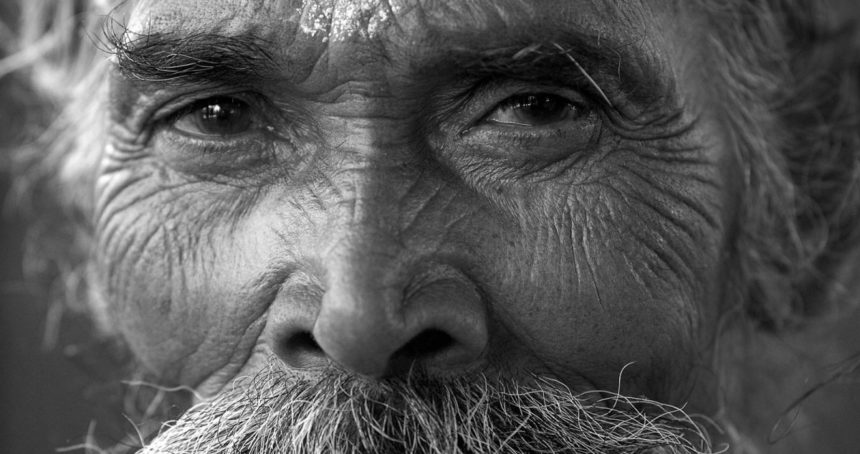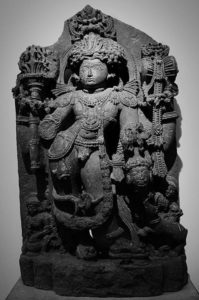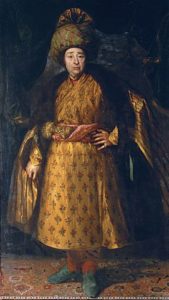Racism is a concept alien to Indian ethos. Yet the colonial legacy of fascination for the white skin could be misconstrued as racist behaviour. But is it really so?
Is India a racist society?

Indians have an undeniable fascination for the white skin, which becomes more pronounced on the occasion of childbirth when every matronly relative comes up with traditional dietary advice for the pregnant woman so as to beget a fair-skinned child. Unfortunately, this is not just restricted to the North of India, as some people believe, but such tendencies are prevalent across the length and breadth of the country in varying degrees.
Before we pass a judgement on contemporary Indian society and label it as racist, let us first examine the cultural and historical landscapes, and try to understand if the collective beliefs and behavioural patterns indeed match with what the world thinks of, when it thinks racism.
Deities and Gunas
For the purpose of practical worship, Hinduism asks of its adherents to visualize the deity in his/her correct form, opulence and color so as to get the proper results from the sadhana. Take, for example, the two most popular gods – Shiva and Krshna. We know from the numerous texts that Shiva is Karpooragowram (कर्पूरगौरं) – as white as camphor, while Krshna is described as having a dark skin tone, like “deep blue rain clouds”. Gowri, the tamer version of the Divine Mother, is fair in colour, but as the asura-destroying Kali she becomes pitch black, while Lalita Tripursundari of the famed Srividya sampradayas is often described in her dhyana slokas, meant for accurate visualizations, as “red like a hibiscus flower or the early morning sun”.
But not just separate deities, sometimes the same deity may appear in different colours as per the need of the seeker. As the ascetic recluse who sits on the Kailasa or as the Divine householder with Parvati and their two children, Shiva is depicted as fair-skinned, but the same Shiva when he turns into Bhairava becomes dark-complexioned. The much-celebrated Kalabhairavastakam by Adi Shankara describes him as Shyamakayam Adidevam Aksharam Niramayam (श्यामकायमादिदेवमक्षरं निरामयम्), dark-bodied primaeval god. But that is not the only way in which Bhairava can be depicted. The Rudrayamala Tantra provides various dhyana slokas for Bhairava depending on whether he is visualized with a primacy of Satwa, Rajas or Tamas guna. The Satwa guna dominant description refers to the deity as the having the color and sharpness of white crystals with a trident in hand, while the rajo guni depiction shows him as wearing red clothes and holding a skull, and other divine accessories, in his hand. The tamoguni dhyana speaks of Bhairava as completely naked and dark blue in color carrying different weapons and displaying terrifying fangs. And then there is an elaborate description of Bhairava when he is to be visualized as containing all the three gunas.

[Bhairava in Hoysala style]
So, we see that dark colour is conventionally taken as a representative of tamo guna. In this context, it must be explained that in Hindu theology, a deity or a god is essentially beyond the three gunas, but can manifest his/her energy through them, as and when required. We may believe, simplistically, that Satwa is the most desirable of gunas, and it certainly is when one aims for peace, but the true spiritual heights are attained when all the three – satwa, rajo and tamo – have been transcended. Hence most sects, particularly the Shakta and Saivas, represent their ishta through all the gunas and then also as trigunatita – beyond the gunas. The inescapable subjectivity of the sadhaka also plays a role. While the deity himself/herself is devoid of gunas, the sadhaka may at a certain time be dominated by one of the three gunas and accordingly experience the deity, coloured in the bias produced by the specific guna. Tamo being lethargic, it is not uncommon for tamo guni representations to be dark and scary; if nothing else the fear of the deity is sufficient to expunge the dullness and push the seeker into positive action. Rajo guna, on the other hand, manifesting as directed action, when positive, and misdirected over-zealousness, when negative, is often depicted using red colour.
However dark is not always tamo guna, for it also represents, at times, a highly evolved spiritual nature. Particularly significant is its symbolism of being able to absorb all colours, which is another way of saying that black embraces all influences and forces, without getting overwhelmed by anyone of them. Krshna, the last avatara of Vishnu, and one of the most revered Hindu gods was dark in color, while his own brother Balarama was fair complexioned. Vyasa, who compiled the Vedas and Puranas, and whose mighty intellect set the tone for Dharma in Kaliyuga, was officially known as Krishna Dvaipāyana indicating his dark complexion. Interestingly, while as per later day Puranas, Radha who is worshipped as a Divine consort of Krshna and the most prominent among Gopis was of a fair complexion, Draupadi, wife of the Pandavas and one of the central characters in the epic, was dark-skinned. We also read in the Mahabharata that Pandu, meaning pale and excessively whitish, was considered sickly and unfit for royal duty and remained a marginal figure in the story.
Let us take a look at the descriptions of Rama as they come to us from the original Ramayana of Valimiki. In the Sundara Kanda we find Hanuman describing Rama to Sita. Most of the verses talk about the characteristics of Rama as an individual, that he was trained in statesmanship, he honoured wise men and brahmins, he was knowledgeable in Vedas, he was extremely virtuous, he was adept in archery, etc and finally, it comes to what can be called a physical description of the son of Dasaratha.
विपुल अंसो महाबाहुः कम्बु ग्रीवः शुभ आननः |
गूढ जत्रुः सुताम्र अक्षो रामो देवि जनैः श्रुतः ||“O princess! Rama is a broad shouldered and a long-armed man. He has a shell-like neck. He has a handsome countenance. He has a hidden collar-bone. He has beautiful red eyes. His fame is heard about by people.”
दुन्दुभि स्वन निर्घोषः स्निग्ध वर्णः प्रतापवान् |
समः सम विभक्त अन्गो वर्णम् श्यामम् समाश्रितः ||He has a voice like the sound of a kettle-drum. He has a shining skin. He is full of splendour. He is square-built. His limbs are built symmetrically. He is endowed with a dark-brown complexion.
चतुष् कलः चतुः लेखः चतुष् किष्कुः चतुः समः |
चतुर्दश सम द्वन्द्वः चतुः दष्टः चतुः गतिः ||“He has fourteen other pairs of limbs (viz. the eye brows, nostrils, eyes, ears, lips, nipples, elbows, wrists, knees testicles, lions, hands, feet and thighs) equally matched. The four large teeth at both the ends of his upper and lower jaws are very sharp. He walks in four gaits (resembling the walks of a lion, a tiger, an elephant and a bull). He is endowed with excellent lips, chin and nose. He has five glossy limbs (viz. the hair, eyes, teeth, skin and soles). He has eight long limbs (viz. the arms, fingers and toes, eyes and ears, thighs and shanks).
The important aspect of these verses, and which defines the ancient Arya trait of defining or describing great men, is the prominence given to their qualities while the physical description is kept brief and vague. Many of the features thus described are those which may apply to any great warrior, except that Rama’s limbs went up to his knees and he had a dark complexion. The accuracy of the physical description is diluted with information about the overall character and general traits, indicating that it was the acts and behaviour of a man which was more important than the looks of the individual.
Vedas and colour
Do the Vedas, as some scholars desperately holding on to the obsolete paradigm of the Aryan Invasion / Migration Theory seem to suggest, mention a set of white-skinned invaders or migrants who landed up here and displaced the dark-skinned original inhabitants? For the purpose of our analysis here, let us confine ourselves to examining just one of the textual records that have been used for making outlandish claims that “the Aryas, who were a white-skinned foreigner to this land, displaced the prevailing culture of the dark-skinned natives known as dāsas or dasyus”. Indeed, while Rig Veda does mention Arya and dāsas, a more careful reading, one that is not reflexively dismissive of the traditional Indian understanding of the matter, would easily clear the misconception of a literal conflict between white vs dark-skinned people. We know for certain that some of the ṛṣis like Kanava were dark in colour. Shrikant Talageri has explained in his many authoritative writings on the subject that the original meaning of the word dāsa, long preserved in the Khotanese dialect of Iranian, simply means man. Not surprising therefore that two of the Vedic names were divodāsa (divine man) and sudāsa (good man). It is only in the post-Vedic era that the word undergoes a change and dasa becomes the equivalent of a servant. In any case, there is no basis for the claims that the Vedic corpus lends itself to a narrative that denotes some societal division or stratification based on the colour of the skin.
Foreign Invasions
The northwestern frontier of the classical era was at the frontline of many an incursion, whether it was by the Persian Achaemenid Empire in 520 BC or the advent of Alexander, who went all the way up to the banks of the Beas River in present-day Himachal Pradesh. This regular turbulence in the area resulted in the region of Gandhara (present-day Afghanistan) becoming a channel of Greek and Persian influence on the native Indian culture. Further, in the classical period, we have the Greco-Bactrians, Indo-Greeks, Sakas, Parthians, Kushanas, White Huns (ancestors of modern-day Pashtuns) all entering and occupying the northern and north-western parts of the subcontinent for different periods of time till the 10th century. However, their influence on the people of India was limited and certainly did not percolate to the level of religious beliefs and cultural attitudes.
712 CE was in a lot of ways a watershed divide in Indian history when Muhammed Qasim captured western parts of modern-day Pakistan for the Rashidun Caliphate though it was only in the tenth century of the common era that the Hindu Shahi kings were finally subjugated by the Ghaznavids, who ventured up to the banks of the Yamuna river. Then the Ghurids came in 1160 CE and a long chain of Turko-Afgan rulers ascended to political power in Delhi, replaced only by the Turko-Mongols. These foreign rulers and their dynasties attracted a large number of Muslim refugees, technocrats, soldiers, artisans, preachers, and warlords, especially during the Mongol attacks in Central Asia when Ghiasuddin Balban ruled over Delhi. Even Babur, who founded the Mughal empire, came all the way from Fergana in modern-day Uzbekistan. Not only did this period see a remarkable rise in the Muslim population of India but also witnessed the assimilation of the Central Asian ethos in the life of ordinary natives of India.
In the writings of Jean-Baptiste Tavernier, a 17th-century French merchant who made six voyages to Persia and India between 1630 CE to 1668 CE, and who had visited the court of Shah Jahan we find an interesting observation:
“They were called Moguls, that is, white of complexion . . . the natives being all brown or olive colour.”
Another Frenchman, physician François Bernier, had briefly served as a personal doctor Dara Shikoh, and after Dara Shikoh was murdered by Aurangzeb, he served at the Mughal court for nearly 12 years. He noted:
“…to be considered a Mogol, it is enough for a foreigner to have a white face and profess Mahometanism.”
Bernier further noted that as those of Iranian descent would look down upon those who, over successive generations of staying in the subcontinent, developed a darker skin complexion. There is hardly any doubt about the longstanding practice of enslaving black people by the rulers of Central Asia and the Middle East, which extended well into the latter half of the twentieth century. Although the existence of the institution of slavery is not the same as the cultural endorsement of racist ideas, there is a strong correlation between the two.

[Jean Baptist Travenier – By Nicolas de Largillière – Herzog Anton Ulrich-Museum Braunschweig]
Racism, if one may call it so, thus entered into the Indian subcontinent through the route of foreign invasions and an alien ethos. To make matters worse, the two hundred years of British rule further cemented the condition as the British were unquestioningly racist. While the British Army deployed Indian soldiers, it was also concerned about the repercussions of allowing brown-skinned natives to fight white-skinned Europeans and hence the bulk of the Indian soldiers were sent to fight the Ottoman Empire in the Middle East during World War 1. Churchill, often described as the greatest Briton, was in favour of using poisoned gas on “uncivilized tribes” of India and the Middle East. In the explicitly racist atmosphere of the 19th-20th century, when the western intellectuals were investing all their energies to ‘scientifically’ establish the supremacy of their race, what was only a resigned acceptance of the temporary domination of the light-skinned foreigner became a more explicit belief among the natives. Coupled with that was the imposition of western education, which other than the benefits that it brought by replacing the decrepit remains of traditional education with modern schools and universities, also actively instilled the colonial bias against the historical achievements of Indians in the fields of art, science, technology and so on.
Reverse Racism
Overseas tourists, especially white-skinned Europeans and Americans, visiting India often complain that not only do they commonly encounter dishonesty but also face a strange kind of prejudice in Indian cities like Delhi and Mumbai. They report that they are often “stared at” and “ridiculed” for no apparent reason. Their accounts and interpretations vary between negative and positive and it is hard to distinguish reality from perception. But it would be safe to say that they are certainly made more conscious of their foreignness. A white man often ends up paying more than due to cab drivers and a white woman may even be subject to a certain degree of sexual harassment in crowded markets. However, this is not classified as racist behaviour in popular discourse because the victims happen to be white-skinned. As an aside, many of these tourists, when they travel to rural India, the hills of Uttarakhand or the temple towns of Tamil Nadu for instance, seem to collectively testify that their experience in non-urban India is decidedly more positive. How do we explain this?
The prejudice against whites is not just limited to the experience of travellers. Even in the intellectual and cultural space, there is an unquestioning acceptance of anti-white racist rhetoric. While there are solid reasons to be dismissive of the scholarship of some western Indologists, the criticism of their work summarily begins with a reference to their skin colour. Given that most lay critics are not familiar with the technical jargon of social sciences, their disapproval of the overt anti-Hindu bias of these scholars finds expression in racist abuse. This tendency is sometimes so powerful that many white scholars, who align completely with the traditional Hindu view and are themselves practising Hindus, are also at the receiving end of indiscriminate jibes. While this may be attributed to the limitations of understanding and articulation of the man on the street, what explains the hostile innuendos against impeccable scholars like David Frawley, Koenraad Elst and Michel Danino by columnists such as Devdutt Pattanaik and Mihir Sharma? Is it safe to call them racist?

[Devdutt Pattanaik]
Untangling the knots
Racism is qualified by acts of discrimination against an individual or group, which are motivated by the skin colour of the victim. At first glance, what happens in India certainly bears resemblance with this definition and for the same reason, is referred to as racism by the liberal intelligentsia of the country, who don’t exactly have a reputation for clarity of thought. A vast majority of Indians are themselves dark in colour and therefore, it is inconceivable how they would look down upon other dark-skinned peoples purely out of colour prejudice. This simple fact is enough to poke gaping holes in the theory of Indian racism. The question remains though, if not racism, then what is it that ails so many of us? It is important to answer this question if we are to address this problem and look for ways to eliminate these undesirable behavioural traits from society.
Indians are not racist, at least not in the way the word is understood globally. We have no history of slavery or targeted harassment and persecution of those with a darker skin colour, unlike pretty much the rest of the world. This bit is established beyond the shadow of a doubt. But what we do have today, at least at some subconscious level in public, and which is at a significant degree of variance with how things used to be at an ancient time, is a deeply ingrained aspiration for the white skin. This is most likely a result of a long period of subjugation under foreign cultures in the previous few centuries. But this is not the only psychological force at play. There is also the subtle manifestation of xenophobia, an irrational fear of foreigners, which can easily materialize in any of the forms of bad conduct that we discussed above. In popular parlance, a person exhibiting these traits is called uncultured, a term that is surprisingly accurate in its assessment of the problem at hand.
A large section of our society is shockingly underexposed to any form of culture – classical, folk or western. This isolation is not a matter of formal education. In fact, as is clear from the example of the western travelers’ experiences, rural India is much more confident and self-assured in its interaction with outsiders. Many of them may still ‘aspire’ for the white skin due to a colonial hangover, yet they are welcoming and dignified with foreigners. The connection may not be superficially visible but it makes for a compelling case of revival of traditional Indian culture. Our society has preserved the outermost aspects of the Indic worldview in the form of rituals and customs. There is a need to revitalize them through intellectual discourse and artistic expression grounded in the Dharmic worldview. This revitalization needs to take place not inside art galleries and seminar halls but in the ever accessible centres of Indic culture, the millions of temples scattered all over the country. There must also be an infusion of Indic content from the Upanishads, Mahabharata, Nyayashastra and other important texts into the curriculum of schools so that not only do we benefit from their philosophical and cultural import but also regain the self-confidence that the centuries of foreign rule snatched away from us.
Revivalism is a bad word in world history because it is another name for identity politics, which inevitably results in violence, genocide, and ethnic conflict. In India, on the contrary, cultural revival is a civilizational imperative and a panacea for the very ills that it is feared to breed. Indians are not racist and will never be but if we are to outgrow the sectarian and xenophobic attitudes that pervade our society, the only effective way forward is to take inspiration from our hoary past. Vasudhaiva Kutambakam may be an overused cliché, used for rationalizing everything from timidity in international affairs to warped notions of secularism in domestic politics, but no one can take away from the grand vision it originally stood for when the Upanishadic seers first conceived the shloka. Not every civilization can draw from such an uplifting philosophical tradition. We can, therefore, we must.

Leave a Reply